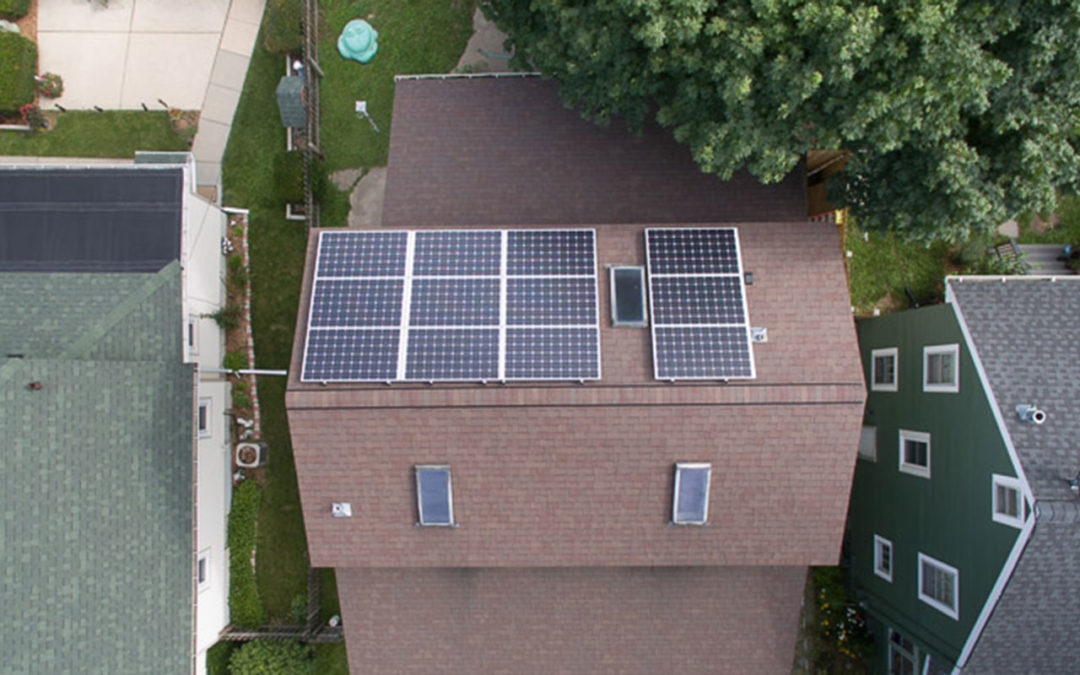
by Tyler Huebner | Jan 8, 2020 | Focus on Energy, Renewables, Solar
The Focus on Energy Renewable Energy Program had another very solid year in 2019. Late last year, the PSC approved several substantive changes in program offerings that will affect the renewable energy industry and its customers going forward. Renewable energy businesses and their customers need to learn about these changes.
First, let’s see how 2019 fared!
Focus on Energy Renewable Energy Program – 2019 Results
For non-residential customers, incentive totals declined slightly in 2019, but substantially fewer PV projects received funding: 135 in 2019 compared with 220 in 2018. At the same time, the average system size increased to 75 kW, up from 48 KW a year ago.Nearly the same number of homes received incentives in each of the past two years – 768 in 2019 compared with 750 in 2018. But more dollars were allocated in 2019 (up from $1.2 million in 2018), because system sizes were larger (7.2 KW in 2019 vs. 6.2 KW in 2018).
Geothermal continued a strong showing, with 77 total installations in 2019, compared with 68 in 2019. In addition, a small wind project received funding in 2019. No biogas projects were funded in 2019.
Changes to the Focus on Energy Renewable Energy Program for 2020
The Focus on Energy renewable energy program will undergo several important changes in 2020 – partly as a result of the trends seen in 2019. Throughout November and December 2019, the Public Service Commission voted to approve these changes, which Aptim, the Focus on Energy administrator, implemented on January 1, 2020.
First, Focus incentives for solar electric (photovoltaic or PV) projects will undergo the biggest change. In a move that many of our members desired to improve their sales cycle, Focus will be changing to “first-come, first-serve” prescriptive incentives for ALL solar PV projects starting in 2020.
However, as demand is expected to remain strong, the elimination of the competitive incentive program for larger PV projects means that fewer dollars will be available for individual projects. This is especially true for larger PV systems. Whereas a customer in 2019 could apply for a maximum incentive of $400,000 through the competitive program, this year the maximum incentive is set at $60,000.
The rationale for this change is to spread available funding across more solar PV projects and incentivize smaller PV projects. We had members with a multitude of opinions on this change, but this is what the PSC and Aptim, respectfully, have landed on.
The tables below shows the 2020 Solar PV incentive levels.
Residential Customer Solar PV Incentives
Business Customer Solar PV Incentives
At the bottom of this post, I’ve included a number of additional details about the 2020 solar program. You can learn more about 2020’s solar program at https://focusonenergy.com/residential#program-renewable-energy
Second, the competitive (RECIP) program will continue for other types of renewable energy projects, such as biogas, small wind, solar thermal, or biomass technologies. The hope is that by taking solar PV out of that competitive program, other technologies may have a better chance of getting funded.
Third, geothermal technologies will be moving out of the Renewable Energy Program in 2020. Residential geothermal incentives will be $750, and information can, for now, still be found under the residential renewable energy page. For buildings (i.e. “non-residential”) installations, geothermal will be treated like any “custom” energy efficiency measure.
Fourth, for Biogas there will still be grants available to conduct Biogas Feasibility Studies in amounts up to $15,000. In addition, biogas projects can compete in the RECIP competitive grant process. You can learn more about these opportunities at https://focusonenergy.com/business/renewables.
Here are additional details on the Focus on Energy Solar PV Program for 2020. These details were provided by Focus on Energy in late 2019 via email to their renewable energy trade allies.
Summary of Renewable Rewards updates for 2020
- The Rural portion of the program will be for residential customers and Agricultural Producers.
-
-
- Residential Rural customers will get up to a $500 bonus for installing a system. Bonus can’t be larger than prescriptive incentive. It will be equal to the incentive amount or $500, whichever is smaller.
- Agricultural Producers (Business customers) will qualify for an incentive match up to $10,000.
- Agricultural Producers are defined as “businesses engaged in the production of grain, livestock, milk, poultry, fruits, vegetables, bees and honey; fish; shellfish; or other common agricultural products including greenhouses.
- A Reservation system will be put in place for all projects.
-
- Residential customer projects will have three (3) months to complete.
- Business customer projects will have six (6) months to complete.
- There will not be a down payment requirement to reserve funding.
- Projects without a proposed completion date will be moved to the back of the queue.
- Reservation form will be posted on the website on January 3, 2020.
- All Reservations and Applications will be done online. If a customer or Trade Ally is unable to use an online version, the Program will provide them with a PDF version upon request, but it will not be available on the website.
- Azimuth rules: All projects within 90 degrees of due South (Compass Direction of 90 to 270 degrees) will be eligible for incentives and will receive the same incentive amount, regardless of azimuth.
- Projects completed in 2019 will get the 2019 incentive rate (will have 60 days from completion date to submit application).
- Projects completed in 2019 will receive the 2019 incentive rate (will have 60 days from completion date to submit application).
- Residential projects that began construction prior to November 1, 2019, and will complete before January 31, 2020 will be eligible for the 2019 incentive rate.
- Commercial projects that began construction, signed contracts, or signed purchase orders prior to November 1, 2019, but will not complete until 2020, will be eligible for the 2019 incentive rate only (12% of project cost, up to $4,000)
- Projects that sign contracts or purchase orders after November 1, 2019, and complete in 2020, will be eligible for the 2020 incentive rate.
- The total budget for Renewable Rewards is set at $4,000,000. The budget will be divided between the following customer groups and project sizes:
-
-
- Remaining funding will be posted on the website and updated every two weeks.
- For business customers: if funding in one tier is exhausted, the customer will have the option to reserve funding for the maximum amount in a smaller tier, provided funding is still available.
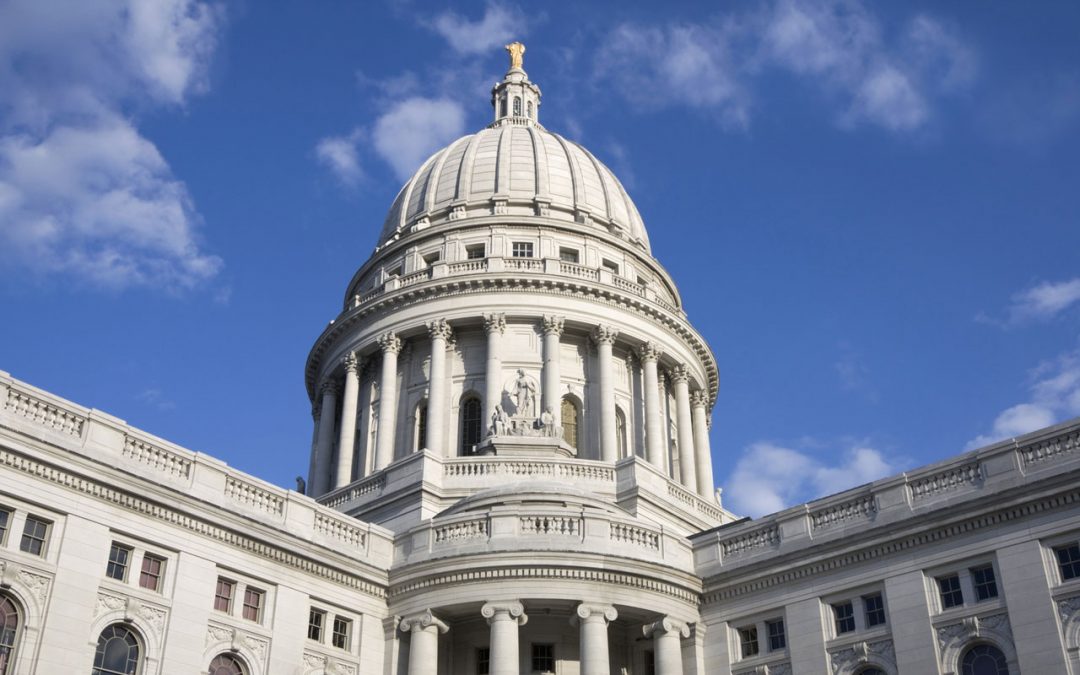
by Jim Boullion | Mar 13, 2019 | Advocacy, Electric Vehicles, Focus on Energy, Policy, Renewables
On February 28, Governor Tony Evers released his 2019-2021 state budget. The budget bill will now go to the Joint Finance Committee who will review it and get briefings on the various provisions from the Governor’s administration and specific state agencies. The committee will also hold a series of hearings around the state to learn what the general public thinks about the budget bill provisions. By statute, the budget bill is supposed to be complete by July 1st, but that date is not often met, regardless of which party holds power. Between now and then, please contact your state legislators and let them know what you think about the various provisions of the bill. You can find your legislator’s contact information by following this link.
Below is a short summary of the Governor’s proposals related to clean energy.
100% Carbon-Free Goal
Establishes a state goal that all electricity produced within the state should be 100 percent carbon-free by 2050. While not a mandate or requirement, writing this goal in Wisconsin’s statutes will help state agencies, the legislature and the public know what we are trying to achieve.
Allocate $75 million in bonding to fund energy conservation projects on state-owned facilities. $25 million of these funds would be allocated to renewable energy projects.
These funds will be used for energy conservation projects to help state agencies and UW System meet their energy reduction goals and reduce utility costs. Renewable projects could include solar, wind, standby generators or geothermal enhancements to state facilities. The achieved savings from the reduction in utility costs would be used to pay the debt service payments on the bonds.
Focus on Energy
Allows the Public Service Commission to increase funding for the Focus on Energy program beyond the current statutory limit of 1.2 percent of utility revenues. The bill also requires the PSC to submit to the Joint Finance Committee a proposal for spending a greater percentage on the programs than is currently allocated (The amount is to be determined by the PSC).
Create the Office of Sustainability and Clean Energy
Transfer the State Energy Office and its employees from the PSC to the Department of Administration. The new office would:
- Administer a $4 million clean energy research grant.
- Advise state agencies in developing sustainable infrastructure to reduce energy use.
- Study and report on the status of existing clean and renewable energy efforts by the state.
- Serve as a single point of contact to assist organizations pursuing clean energy opportunities.
- Identify clean energy funding opportunities for private and governmental entities.
- In coordination with other state agencies, collect and analyze data needed for clean and renewable energy planning and review those plans with the governor and legislature.
Use a Portion of VW Settlement Funds for EV Charge Station Grants
Spend $10 million of the remaining $25 million from the Volkswagen emissions settlement on grants for electric vehicle charging stations. The rest would be dedicated to replacing public transit vehicles. $42 million of the original $67.1 million that Wisconsin was allocated from the settlement was spent in 2017-19 for replacement of state vehicles and the transit assistance program.
Hybrid Vehicle Registration Fees – Definition expanded to include all hybrids, not just PHEV’s
All hybrid vehicles (any vehicle that uses a battery to increase mpg) would pay the additional $75 annual fee that was originally designed to cover only Plug-in-Hybrid vehicles. This is in addition to the proposed $96 (up from $75) annual vehicle registration fee paid by all vehicles. All-electric vehicles would continue to pay the additional $100 annual fee that was already in the statutes. The fee is designed to recover the sales taxes that would have been paid if they were powered by gasoline that is used to support the transportation budget.
WEDC Tax Credits for Energy Efficiency or Renewable Energy
WEDC would be allowed to award business tax credits of 5% for investments made on projects that improve energy efficiency or that generate energy from renewable resources.
Ratepayer Advocate (Intervenor Compensation) Grants
The bill increases from $300,000 to $500,000 the annual grants the PSC is allowed to make to nonprofit corporations that advocate on behalf of utility ratepayers.
If you have any questions or would like more information about any of these energy related issues please contact Jim Boullion, RENEW Wisconsin’s Director of Government Affairs.
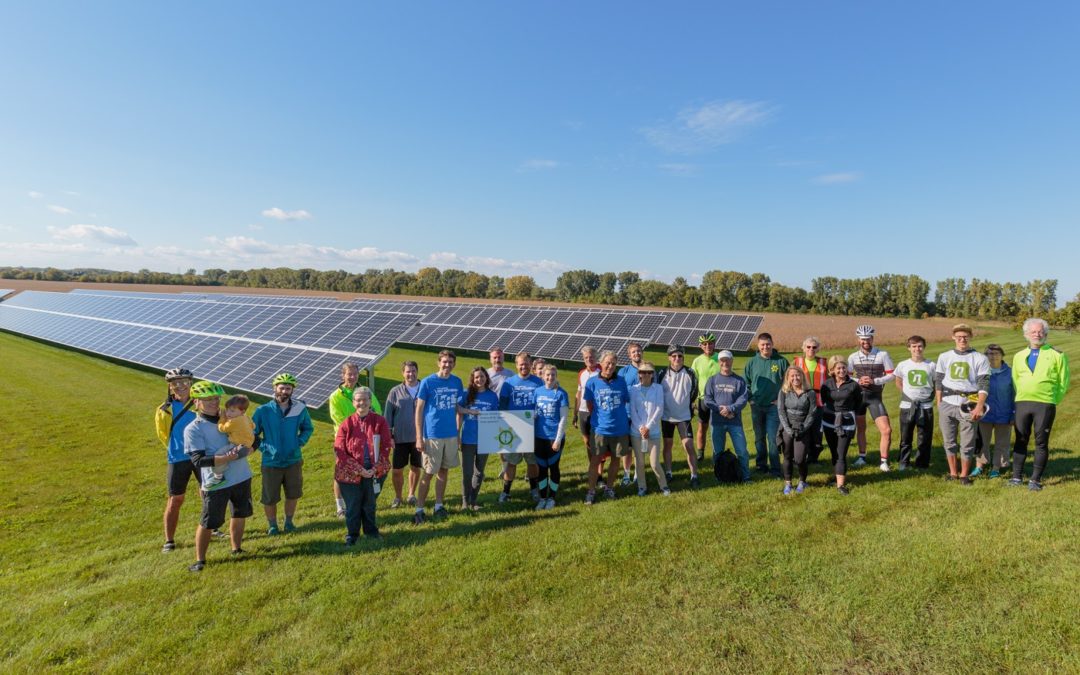
by Michael Vickerman | Oct 16, 2018 | Advocacy, Biogas, Focus on Energy, Programs, RENEW Wisconsin, Renewables, Solar, Wind
For many years, Focus on Energy’s renewable energy incentive program has labored under an operating environment resembling a regulatory roller-coaster. It has weathered funding suspensions, mid-stream budget reallocations, and an effort to replace rebates with loans.
But that extended wild ride is finally coming to an end, the result of Public Service Commission orders that will restore stability and consistency to Focus’s renewable energy offerings.
The PSC’s ruling in June 2018 locked in $22 million in renewable energy incentives for the 2019-2022 funding cycle, split equitably between residential and business customers. That allocation amounts to a funding increase of $4.7 million, or 27%, over the previous four-year cycle. In addition, the order granted flexibility to move funds between residential and business customers to better ensure all the funding is utilized.
A subsequent order in September 2018 locked in improvements to the business program, including a streamlined application process, a guarantee of request-for-proposals issued three times per year, and a funding set-aside for mid-size projects (between 20 and 100 kilowatts for solar power projects).
We are starting to see the results of these positive decisions!
The business program has an RFP on the street with applications due next week, on Tuesday, October 23rd, for the first round of projects that will be installed in 2019.
All in all, the PSC’s decisions tracked closely with the recommendations submitted by RENEW and its member businesses regarding funding levels and program design.
But before we dive into how it happened, RENEW wishes to thank PSC Chairperson Lon Roberts and Commissioners Mike Huebsch and Rich Zipperer for their votes in support of a strong, predictable, and consistent renewable energy program for Focus on Energy!
We would also like to thank the Commissioners’ Executive Assistants and the Commission’s Focus on Energy staff team for the role they each played in setting up success for 2019 through 2022.
The Anatomy of the Victory
Our goals for the 2018 planning process were twofold: first, to lock in a stable and well-funded operating environment for renewables; and second, to integrate needed process improvements to the incentive program targeting commercial installations. Our member businesses assisted us in formulating these recommendations which were based on an assessment of recently adopted tax and trade policies and their likely effects on customer appetite for onsite renewable generation.
Our success was made possible by the participation of several influential constituencies that weighed into the formal planning docket. For the first time in Focus on Energy’s history, associations representing general contractors, builders, and architects voiced their support for a well-funded renewable energy program. Drawing upon his background representing contractors at the Capitol, Jim Boullion, RENEW’s Government Affairs Director, was instrumental in engaging these groups to submit a letter conveying their support for continuing current funding levels over the next four years.
In addition, renewable energy businesses and associations across solar, biogas, and geothermal technologies weighed in with support. These businesses span the entire state, which helped us make the point that the renewable energy program serves rural and urban areas.

Geographic Representation of Signatories
Our success in 2018 was also made possible by RENEW’s organized media outreach and recognition swings across Wisconsin from 2015 through 2017. Those events highlighted the increasing appeal of rooftop solar for commercial customers, school districts, and agricultural producers, and called attention to the Focus on Energy incentives that moved these installations to completion.
The ribbon-cuttings and award ceremonies in locations such as Racine, New Berlin, and Darlington proved effective in generating positive coverage from the press. RENEW complemented that effort with analysis documenting the renewable program’s statewide reach and effectiveness in supporting Wisconsin businesses, both at the customer and contractor level.
That effort first bore fruit in October 2016, when the PSC decided to scrap the sputtering loan program and replenish the incentive budget for 2017 and 2018 with unspent loan dollars totaling more than $8.5 million. With that commitment in place, renewable energy businesses could bank on a relatively stable and adequate funding base, and break free of the fits and starts that had hampered their ability to meet growing customer demand.
Getting the 2017 and 2018 programs in place and, through our members, showing them to be successful gave us a strong negotiating position to showcase “what is working” and to advocate for continued rebate funding for 2019-2022.
In the end, it was a combination of RENEW’s strong advocacy on behalf of our member businesses and allies, and the PSC’s desire to see the program succeed that led to this positive outcome. We are fortunate to have so many actively engaged members who understand the value of speaking up with a unified voice.
Said RENEW Executive Director Tyler Huebner: “The Commissioners definitely heard the collective comments of our industry and stakeholders to make the renewable energy program as streamlined and business-friendly as possible. RENEW Wisconsin will continue to work with the Commission, PSC staff, and the Focus on Energy program administrators to make the programs simple for customers and the renewable energy marketplace, while ensuring cost-effective outcomes.”
Once again, thank you to our Members and Stakeholders who supported our positions, and to the PSC Commissioners, Executive Assistants, and Staff who all played instrumental roles in this process.
We look forward to a strong Focus on Energy renewable energy program for 2019 through 2022!
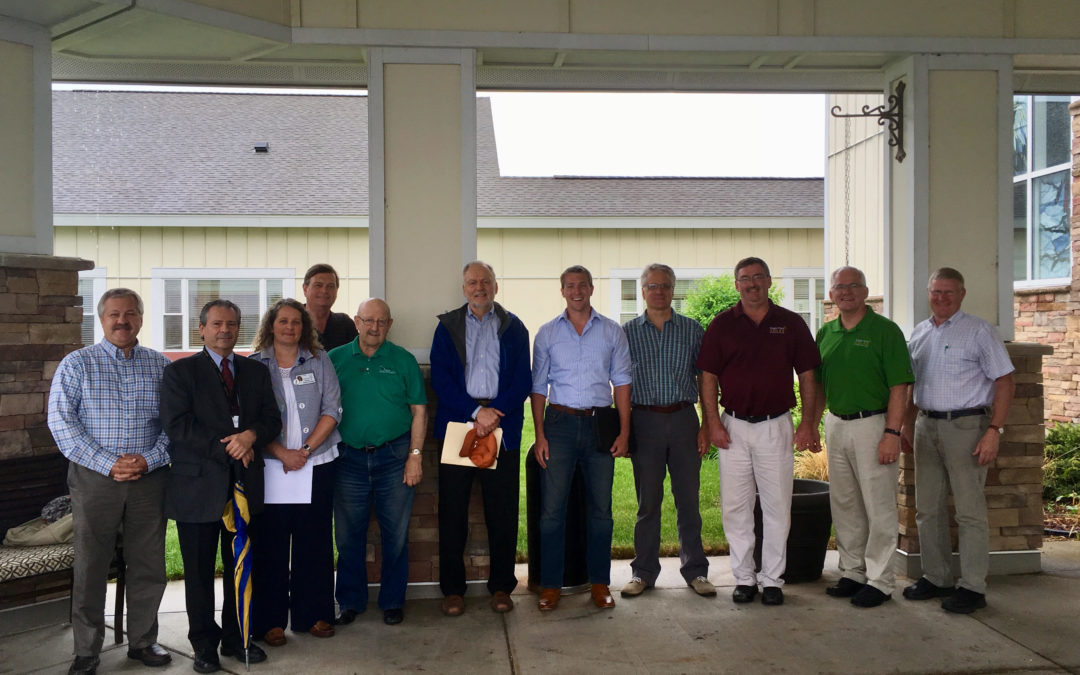
by Jim Boullion | Jun 11, 2018 | Focus on Energy, Solar
RENEW’s summer tour of renewable energy projects to help educate legislators and local officials about renewable energy continued on May 30th, as I helped to coordinate a visit for State Senator Howard Marklein, Representative Ed Brooks and Jon Hochkammer of the Wisconsin Counties Association to the Sauk County Health Care Center to showcase a new solar project that was one of two arrays that were approved last year by the Sauk County Board.
The project was made possible through the use of a third-party investor that allows the county to benefit from the projects without any upfront cash outlay. Eagle Point Solar, who built the project, is also the initial investor/owner of the installations. Financing for the project, which included a Focus on Energy grant, provides an option for the county to purchase the arrays after seven years and potentially save money on their utility bills. The cumulative cash flow savings from both projects over a 25-year period is projected to be more than $550,000 for the county!
As quoted in a local newspaper story, Mark Hanson, director of sustainable services for Hoffman Planning, Design and Construction who helped coordinate the project said “It is groundbreaking for a Wisconsin county because some counties are just getting into it with this combination of both the solar and third-party financing.”
Eagle Point Solar General Manager Jim Pullen said from an investor’s standpoint, there are advantages to having another party in the project. “We have the ability to monetize the tax credits and monetize the depreciation and therefore our cost to build this solar array is less than if the county just wrote us a check,” Pullen said. “Therefore we pass that lower cost back to the county by way of a lower energy rate.”
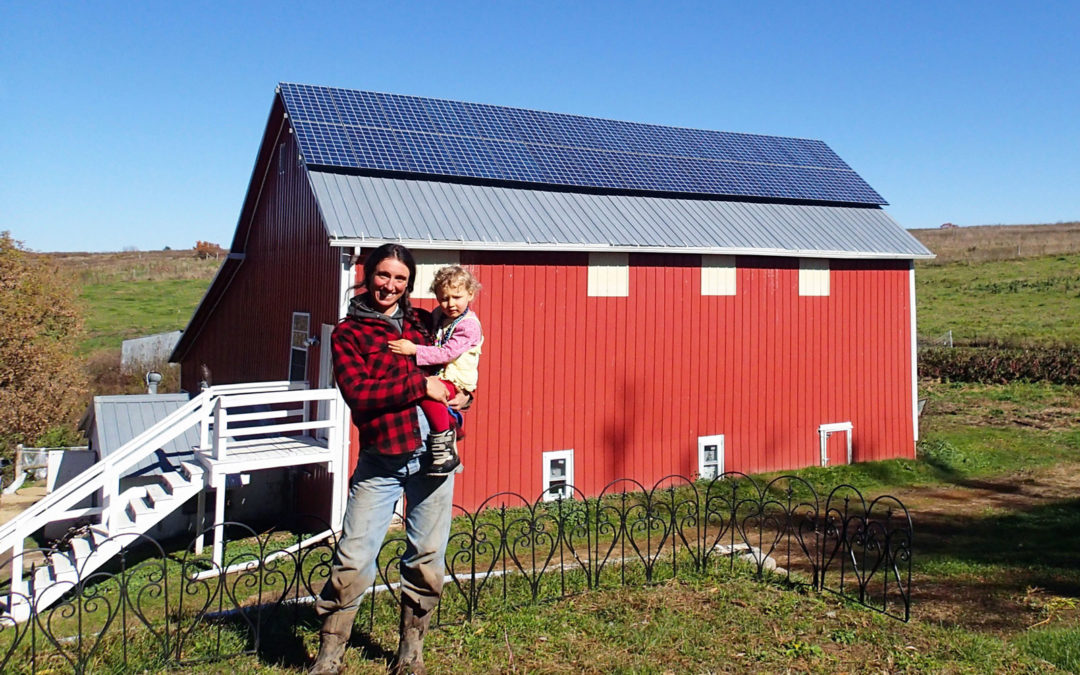
by Tyler Huebner | May 3, 2018 | Biogas, Focus on Energy, Geothermal, RENEW Wisconsin, Solar
Focus on Energy’s Renewable Energy Program Funded for 2019-2022
Today, the Public Service Commission of Wisconsin made preliminary decisions to allocate approximately $5.5 million in incentives per year to the renewable energy programs within “Focus on Energy” for the years 2019 through 2022.
The decisions came as part of the four-year planning process for the Focus on Energy program. Focus on Energy delivers incentives and education to help utility customers reduce energy usage and save money through energy efficiency and renewable energy technologies and projects. The total budget for the statewide Focus on Energy program is approximately $100 million annually.
RENEW Wisconsin’s Executive Director Tyler Huebner stated, “Today’s decisions to fund the Focus on Energy renewable energy incentive programs at adequate budget levels will set up the solar, geothermal, small wind, and bioenergy markets for a successful four-year period. We advocated for a consistent, predictable program and the PSC delivered, which is a win for customers and the growing industry of small businesses who do this work all across the Badger State. Based on recent experience, this level of funding should incentivize approximately 2000 homes and perhaps 600 or more businesses and nonprofits as they pursue renewable energy projects throughout the next four years.”
“Renewable energy creates jobs in Wisconsin, develops home-grown power sources, and enables a cleaner environment for future generations,” said Huebner.
Today’s verbal decisions and discussion:
• Allocated approximately $5.5 million per year for renewable energy incentives for 2019-2022.
• Established that four sub-markets will be served: residential, small business, mid-sized business, and larger business projects. The mid-sized business program will be new for 2019. Nonprofits and local governments fall into the “business” categories as well.
• Allows flexibility to meet market demand in these four sub-markets
• The residential and small business programs will continue to be first-come, first-serve programs. The mid-sized business and large business programs will start out being run through a request-for-proposal process.
• A study being conducted on the renewable energy programs may inform improvements to the program when it is completed.
• Opportunities to support rural and agricultural communities using $5 million in unspent funds will be explored, with a staff memorandum on possible options to be developed by July 1. $20 million was previously allocated towards biodigesters, with $15 million being awarded to the BC Organics project in Brown County in 2016.
“The Commissioners definitely heard the collective comments of our industry and stakeholders to make the renewable energy program as streamlined and business-friendly as possible. RENEW Wisconsin will continue to work with the Commission, PSC staff, and the Focus on Energy program administrators to make the programs simple for customers and the renewable energy marketplace, while ensuring cost-effective outcomes,” said Huebner.
Want to champion renewable energy victories like this?
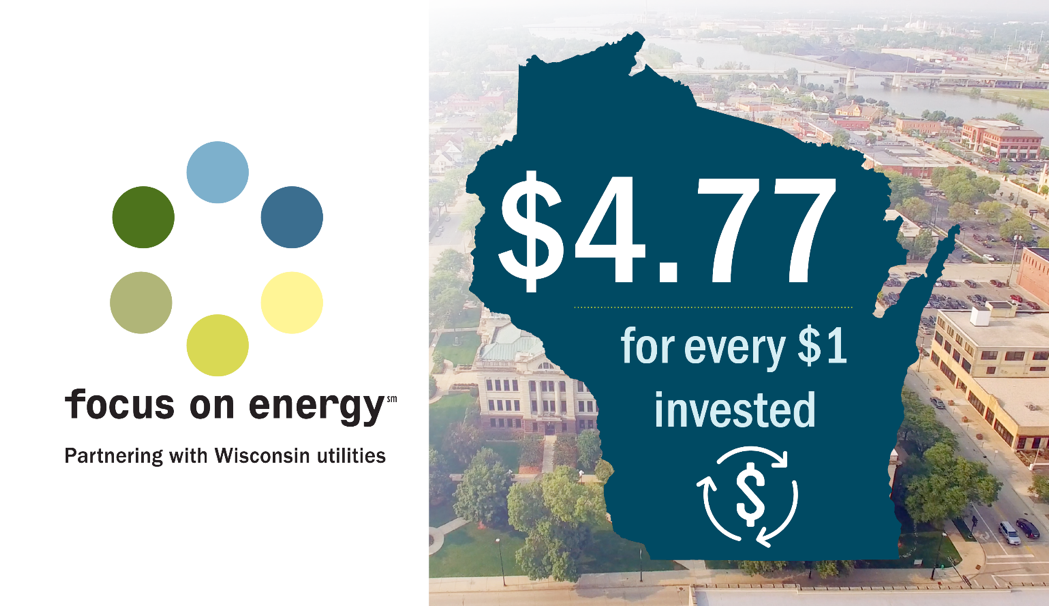
by Michael Vickerman | Jan 29, 2018 | Biogas, Focus on Energy, Geothermal, Policy, Solar
Focus on Energy, the state’s ratepayer-funded energy efficiency and renewable energy program, continues to yield dividends for Wisconsin’s economy.
An independent analysis of program investments in 2015 and 2016 shows that energy savings from completed projects generated $208 million in economic benefits and supported about 1,200 jobs annually.
The Cadmus Group, an independent third-party evaluator, found that Focus on Energy achieved a benefit-cost ratio of $3.24 per dollar spent without factoring in broader economic impacts such as job creation. When broader economic impacts are factored into the analysis, the benefit-cost ratio rises to $4.77 per program dollar invested.
Cadmus released its findings in a January 2018 report submitted to the Public Service Commission of Wisconsin, which oversees the Focus on Energy program.
“A $4.77 return on investment shows Focus on Energy is one way Wisconsin encourages economic development and grows its favorable business climate,” said Public Service Commissioner Lon Roberts in a press release dated January 29, 2018.
“When a business saves money by saving energy, it also becomes more globally competitive,” Commissioner Roberts added.
For more information, view the full report or executive summary on Focus on Energy’s website, www.focusonenergy.com.







